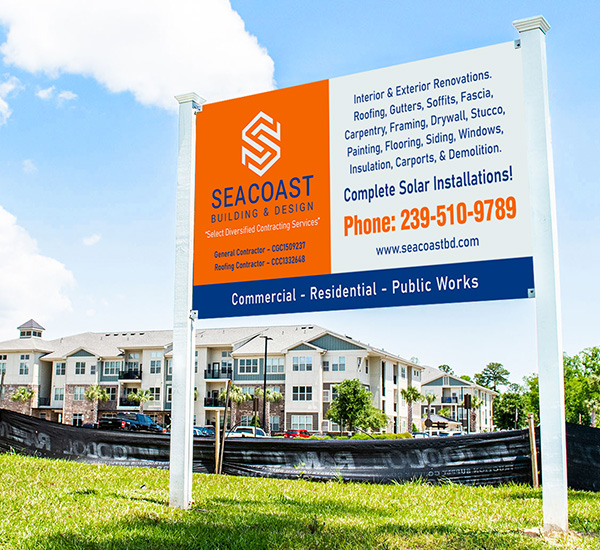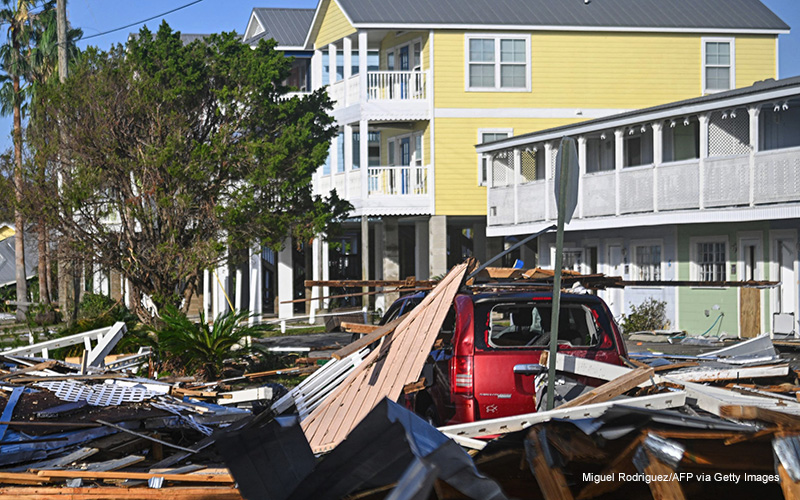July 30, 2025
A Guide to Hurricane Recovery
Coastal living in regions like Florida promises many advantages, including scenic ocean views, a tranquil ambiance, and proximity to nature. Yet, this lifestyle also carries unique risks, particularly during hurricane season. In the aftermath of a storm, homeowners must assess and address damage inflicted by high winds, heavy rainfall, and storm surges. However, diligent post-storm home maintenance can minimize long-term hurricane impacts, protect property values, and keep coastal residences safe and comfortable.
This comprehensive guide outlines essential steps for coastal homeowners to properly care for their properties after a hurricane. The tips will help ensure safety and preserve your home’s long-term condition and aesthetic.
1. Safety First: Assess the Hurricane Damage
Ensure the local authorities have declared the area safe before inspecting your home, as floodwaters, downed power lines, and weakened structures can pose serious hazards. Once the area is deemed safe, approach the inspection of your home with caution.
- Exterior Assessment: Carefully inspect the roof, siding, windows, and foundation for any visible damage. Address issues like loose shingles, broken windows, and cracks in the foundation immediately to prevent further deterioration.
- Interior Inspection: Look for signs of water infiltration, such as stains on walls, ceilings, or floors. Buckled flooring or warped walls are indicators of water damage that require prompt attention.
- Electrical Hazards: Check for any exposed wiring or electrical outlets affected by water. If you have any concerns, it’s best to hire a licensed electrician to thoroughly assess your home’s electrical system.
2. Roof Repairs and Maintenance
The roof is one of the most vulnerable components of a home during a hurricane. Powerful winds can rip off shingles or tiles, while flying debris may puncture the roof. A damaged roof can then lead to leaks that compromise the structural integrity of the entire home.
- Immediate Repairs: Temporary fixes like tarping or sealing are necessary until a professional roofer can make permanent repairs. Missing shingles or broken tiles should be replaced as soon as possible to prevent water infiltration and further damage.
- Gutter Check: Clogged or damaged gutters can cause water to pool and seep into the home’s foundation. Clearing debris from gutters and downspouts is crucial to ensure proper water drainage.
3. Water Damage Control
After a hurricane, water damage is a widespread problem that can lead to mold growth and structural issues if not promptly addressed. Excess moisture left unchecked can quickly cause significant damage.
- Dry Out Your Home: Use dehumidifiers and fans to speed up the drying process. Increase airflow by opening windows. Remove or thoroughly dry any carpets, furniture, and fabrics to prevent mold growth.
- Check for Mold: Coastal homes, especially in humid regions like Southwest Florida, are susceptible to mold after flooding. Mold can start developing within 24-48 hours of water exposure, so inspect damp areas like basements, attics, and crawl spaces. Severe cases may require professional mold remediation.
4. Prevent Saltwater Corrosion
Coastal homeowners must contend with the corrosive effects of saltwater from ocean spray and storm surges, which can damage metal components like pipes, electrical systems, and outdoor furniture just as readily as rainwater.
- Rinse Exterior Surfaces: After a hurricane, thoroughly rinse down your home’s exterior – including windows, doors, and any metal fixtures – to remove salt deposits. Regular cleaning of salt from metal surfaces will prevent corrosion and prolong the lifespan of your home’s components.
- Inspect Metal Structures: Carefully inspect all outdoor structures and metal components, such as railings, gates, and HVAC units, for signs of rust. If rust is detected, treat it immediately with anti-rust products. Consider replacing any severely rusted parts to prevent further damage.
5. Foundation and Structural Integrity Check
Coastal homes face a heightened risk of foundation and stilt damage, particularly in the aftermath of a hurricane. Prolonged submersion in floodwaters or unstable ground can compromise the structural integrity of a home’s foundation and supporting stilts, leading to cracks and instability.
- Look for Cracks: Carefully inspect the foundation for any new cracks or signs of structural movement. Small cracks can be filled with sealant, but larger cracks or issues should be evaluated by a qualified structural engineer.
- Shoreline Erosion: Coastal homes can suffer from erosion that compromises the structural integrity of foundations and supports. If the hurricane has exacerbated erosion around your home, it’s advisable to consult a specialist to stabilize the surrounding area.
6. Landscaping and Drainage Systems
Proper maintenance of your home’s landscaping and drainage systems is essential for directing water away from the foundation. After a hurricane, be sure to clear any debris and verify that these systems are working effectively.
- Clear Drains and Ditches: Clogged drains and ditches from storm debris can cause standing water, which can damage your home’s foundation. Be sure to clear any blockages and ensure water is able to flow freely.
- Replanting and Stabilization: Powerful gusts can tear up vegetation, leaving the soil vulnerable to erosion. To mitigate this, replant affected areas and consider applying mulch or ground cover to safeguard against additional soil loss.
7. Windows and Doors
While windows and doors are critical for protecting homes from hurricanes, they remain vulnerable to significant damage during these powerful storms. Even homes equipped with hurricane-rated windows should have them thoroughly inspected after a storm has passed.
- Seal Any Leaks: If windows or doors are leaking, use weatherproofing materials to seal gaps until they can be professionally repaired. Broken glass should be replaced immediately to avoid further damage.
- Consider Storm Shutters: Homeowners in high-risk storm areas should consider installing storm shutters or reinforcing windows to bolster protection during future severe weather.
8. Prepare for Future Hurricanes
Homeowners in hurricane-prone areas must prioritize preparation. Proactive preventive measures can significantly reduce potential hurricane damage in the future.
- Reinforce Structures: Upgrading your home’s roof, windows, and doors with hurricane-resistant materials can significantly reduce storm damage. This simple step is an effective way to protect your property.
- Create an Emergency Plan: Develop a comprehensive hurricane preparedness plan that includes a list of emergency contacts and a designated evacuation route. Additionally, review your home insurance policy to confirm coverage for hurricane-related damages, and thoroughly document your home’s condition with before and after photographs in case you need to file an insurance claim.
- Routine Maintenance: Regularly inspecting and maintaining your home’s roof, gutters, and foundation is crucial to ensure they remain in good condition. Addressing small issues promptly can prevent them from escalating into larger, more costly problems down the line.
Maintaining the long-term value and safety of your coastal home in Southwest Florida requires critical post-hurricane care. Proactive maintenance and immediate repairs can help mitigate damage, but investing in a hurricane-resilient home design provides an even more robust defense.

Seacoast Building & Design
Office: (941) 500-5431
Hours of Operation:
Weekdays – 8 am to 6 pm
Saturday – 9 am to 3 pm
Or by Special Appointment.
Payment Methods:
Cash, Visa, Master Card, Amex, Discover, Invoice, Wire, ACH
Company Owners:
Clear & Chandra Dayland


